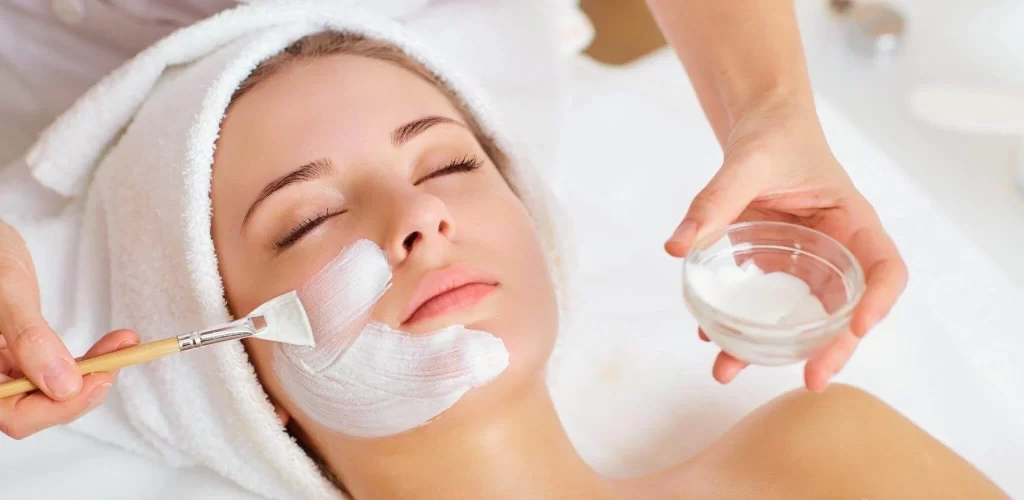Fillers in combination with skincare regimens can transform your beauty routine. While traditional skincare focuses on hydration and protection, fillers add volume and smoothness to the skin. This contrast creates a powerful duo that enhances overall appearance, like complementary skin care treatments in a perfect skincare routine or a comprehensive skin care regimen with a consistent skin care regimen. Skincare alone may not tackle deeper wrinkles or loss of elasticity. However, when paired with fillers, you can achieve a youthful glow that lasts.
Understanding how these two elements work together is essential for anyone seeking effective results in a powerful skincare routine or a consistent skin care regimen, alongside personalized skincare and dermal filler. Fillers provide instant gratification, while skincare maintains long-term health. Combining both can boost confidence and redefine beauty standards. Dive into this post to discover how to maximize your skincare regimen with fillers for the best results.
Key Takeaways
-
Combining fillers with a good skincare regimen can enhance the overall appearance of your skin, making it look healthier and more youthful.
-
To maintain skin health after receiving fillers, incorporate hydrating products and sun protection into your daily routine.
-
Use skincare products with active ingredients that complement fillers, such as hyaluronic acid, to boost hydration and treatment effects.
-
Extend the longevity of your fillers by regularly moisturizing and using gentle cleansers to avoid irritation.
-
Follow specific post-filler skincare tips, like avoiding harsh scrubs and excessive heat, to ensure optimal healing and results.
-
When applying makeup after fillers, opt for lightweight formulas that won’t clog pores or irritate sensitive areas.
Benefits of Combining Fillers and Skincare
Enhanced Aesthetic Results
Fillers can provide immediate volume and smoothness to the skin. However, their effects can be amplified when combined with a consistent skincare regimen and dermal filler. Regular use of quality skincare products enhances the overall appearance of the skin. Ingredients like hyaluronic acid and peptides boost hydration and elasticity. This synergy helps achieve a more youthful look.
A well-rounded skincare routine also prepares the skin for fillers. Clean, hydrated skin care allows for better absorption of the filler. It minimizes risks such as bruising or swelling. Patients often notice that their results last longer when they maintain a proper skincare routine. This combination leads to more satisfying aesthetic outcomes.
Skin Rejuvenation and Hydration
Skincare plays a crucial role in skin rejuvenation. Products containing antioxidants can protect against environmental damage. They help maintain the skin’s integrity and vitality. When fillers are used alongside these products with care, the results are significantly enhanced.
Hydration is another key factor. Fillers add volume but do not hydrate the skin. A consistent skincare regimen focuses on hydration. Using moisturizers, serums, and dermal filler keeps the skin plump and healthy with care. This maximizes the effects of fillers, leading to a more radiant appearance.
Long-Term Skin Health
Combining fillers with skincare promotes long-term skin health. Fillers provide short-term benefits, while skincare supports ongoing maintenance. Regular use of sunscreen protects against UV damage, which is vital for maintaining youthful skin, even with dermal filler.
Incorporating retinoids into a routine can improve cell turnover. This leads to smoother and brighter skin over time. Patients who prioritize both dermal filler treatments report improved texture and tone.
Investing in both fillers and skincare can yield significant benefits. It encourages a holistic approach to beauty that goes beyond temporary fixes like dermal filler.
Cost-Effective Approach
Using both methods, including dermal filler, can be cost-effective in the long run. Investing in good skincare reduces the need for frequent filler touch-ups. Proper care extends the life of filler treatments.
Patients should consider consulting professionals to create an optimal plan. This ensures that both products complement each other effectively.
Maintain Skin Health After Fillers
Protect Skin Barrier
Gentle, hydrating products are essential after receiving a dermal filler treatment. These products help maintain the skin barrier. A strong skin barrier prevents irritation and promotes healing. Look for moisturizers that contain ingredients like hyaluronic acid or glycerin. These ingredients draw moisture into the skin.
Avoid using products that can harm the skin barrier. Harsh cleansers can strip the skin of its natural oils. This can lead to dryness and discomfort. Instead, choose a mild cleanser that cleans without causing irritation.
Avoid Harsh Exfoliants
After filler injections, it is crucial to avoid harsh exfoliants or active ingredients. Products containing retinol or strong acids can irritate sensitive skin. The skin needs time to recover after treatment. Using these products too soon can cause redness or swelling.
Wait at least two weeks before reintroducing exfoliating products. This allows the skin to adjust post-treatment. Gentle exfoliation can be beneficial later on but should be approached with caution. Always listen to your skin’s needs during this period.
Implement Sun Protection
Implementing sun protection is vital for maintaining skin health after fillers. Sensitive skin is more vulnerable to UV damage following treatment. Apply a broad-spectrum sunscreen with an SPF of 30 or higher daily. This protects against both UVA and UVB rays.
Reapply sunscreen every two hours, especially if outdoors. Wearing hats and sunglasses adds extra protection from the sun’s harmful rays. Avoid direct sunlight when possible, particularly during peak hours.
Hydration and Nutrition
Staying hydrated supports overall skin health post-treatment. Drink plenty of water throughout the day. Proper hydration helps maintain skin elasticity and suppleness.
A balanced diet rich in vitamins and antioxidants also benefits the skin. Foods like fruits, vegetables, nuts, and fish provide nutrients that promote healing and radiance.
Monitor Reactions
Monitoring your skin’s reactions after filler treatments is important. If you notice unusual redness, swelling, or pain, consult a healthcare professional immediately. Keeping track of how your skin responds helps ensure safety.
Document any changes in your skincare routine as well. This information will aid professionals in providing tailored advice for future treatments.
Enhance Treatment Effects with Skincare
Calming Products
Use calming and soothing products after filler treatments. These help reduce post-treatment redness and swelling. Ingredients like aloe vera and chamomile are excellent choices. They provide relief and promote healing.
Many skincare products contain these beneficial ingredients. Look for creams or serums that specifically mention calming properties. Applying these products can make a noticeable difference in comfort.
Regular use of calming products can also improve the overall appearance of the skin. This is especially true when combined with fillers. It creates a more balanced and refreshed look.
Antioxidants for Recovery
Incorporate antioxidants into your skincare routine. Antioxidants support skin recovery and enhance treatment outcomes. Vitamins C and E are popular options. They protect the skin from damage while promoting healing.
Using antioxidant-rich skincare products can boost your results. They work by neutralizing free radicals that can harm the skin. Regular application helps maintain skin health over time.
Consider using serums that contain these powerful ingredients. Apply them daily to maximize their benefits. This simple addition can lead to significant improvements in skin texture and tone.
Complementary Products
Select skincare products that complement the specific type of filler used. Different fillers serve various purposes, such as adding volume or smoothing fine lines. Therefore, tailor your skincare regimen to align with your treatment goals.
For hyaluronic acid fillers, hydrating products are key. These help maintain moisture levels in the skin. Look for quality skincare products that include hyaluronic acid or glycerin.
If you’ve received collagen-stimulating fillers, focus on skin rejuvenation. Use products designed to promote collagen production. Ingredients like retinol can be particularly effective in this regard.
Personalized Skincare Regimen
Develop a personalized skincare regimen based on your unique needs. Everyone’s skin reacts differently to treatments. Therefore, it’s essential to consider your specific concerns and goals.
Consult with a dermatologist or skincare professional for tailored advice. They can recommend focused skincare strategies that enhance your results. This might include specific topical skincare products or regular skin treatments.
Implementing a customized approach ensures you get the most out of your filler treatments. It also helps achieve long-term skincare goals.
Extend Fillers’ Longevity
Hydrating Serums
Hydrating serums play a crucial role in skincare. They help maintain the plumpness of the skin. These products often contain ingredients like hyaluronic acid. This ingredient draws moisture into the skin, enhancing the effects of fillers. Using serums regularly can make fillers last longer.
Incorporating these serums into your daily routine is simple. Apply them after cleansing and before moisturizing. This layering technique locks in moisture effectively. The result is a more youthful appearance over time.
Lifestyle Factors
Lifestyle choices impact the effectiveness of fillers. Smoking is one factor that can degrade skin quality. It reduces blood flow and can lead to premature aging. Avoiding smoking can significantly benefit overall skin health.
Excessive sun exposure also harms fillers. UV rays break down collagen and elastin. These proteins are essential for maintaining skin structure. Wearing sunscreen daily protects against sun damage. This simple step helps keep fillers looking fresh.
Professional Consultations
Regular consultations with skincare professionals are vital. These experts can assess your skin’s needs. They provide personalized advice on maintaining filler results. Adjusting your skincare routine based on their recommendations is beneficial.
Skincare professionals can suggest treatments that complement fillers as well. For example, they might recommend chemical peels or laser treatments to enhance skin texture. This holistic approach ensures that your skin remains vibrant and healthy.
Post-Filler Skincare Routine Tips
Gentle Cleansing
Cleansing the skin is crucial after receiving fillers. Use a gentle cleanser that doesn’t irritate the treated areas. Avoid scrubbing or applying pressure. This helps prevent any discomfort and allows the skin to heal properly.
A good skincare routine should include cleansing twice a day. Morning and night routines help maintain skin clarity. Opt for products that are free from harsh chemicals to ensure safety. Always rinse with lukewarm water to avoid aggravating sensitive areas.
Hydration Boost
Moisturizing is essential after filler treatments. Products containing hyaluronic acid are ideal for boosting hydration. This ingredient attracts moisture, keeping the skin plump and healthy. Apply moisturizer immediately after cleansing for best results.
Incorporate a hydrating serum into your routine as well. Look for serums that complement your moisturizer. A comprehensive skin care routine can enhance the effects of fillers. It helps maintain a youthful appearance longer.
Follow Professional Advice
Personalized advice from your aesthetician is invaluable. They understand your specific skin needs and can guide you on proper skincare routines. Following their recommendations ensures optimal care post-treatment.
Schedule follow-up appointments to monitor your progress. Your aesthetician may suggest adjustments based on how your skin responds to fillers. Adapting your routine can lead to better results over time.
Avoid Certain Products
Steer clear of exfoliants and active ingredients immediately after treatment. These can irritate the skin and disrupt healing. Wait at least a week before reintroducing these products into your regimen.
Also, limit sun exposure during recovery. UV rays can damage newly treated areas and affect filler longevity. Use sunscreen daily, even when indoors, to protect your skin.
Consistency is Key
Establishing a regimented skin care routine is essential for long-term benefits. Stick to your plan daily for the best outcomes. Regularly using recommended products keeps skin in optimal condition.
Consider creating a home skincare routine that fits your lifestyle. Simplicity often leads to consistency. Make sure to include all steps: cleanse, hydrate, and protect.
Makeup Guidelines After Fillers
Wait Period
Wait at least 24 hours after getting fillers before applying any makeup. This time allows the skin to settle and reduces the risk of irritation. Immediate application can lead to complications, such as swelling or uneven texture. Skin needs time to adjust after the treatment.
Makeup can trap bacteria, which may cause infections. Allowing a full day ensures that any minor bruising or swelling has time to decrease. It’s best to follow this guideline strictly for optimal results.
Product Selection
Choose lightweight, non-comedogenic products. These items do not clog pores and are less likely to cause breakouts. Heavy foundations can overwhelm freshly treated skin. They may lead to discomfort and unwanted reactions.
Look for products labeled as “oil-free” or “water-based.” These formulations provide coverage without adding excess weight. Avoid products with alcohol or harsh chemicals, as they can irritate sensitive areas.
Mineral Makeup
Opt for mineral-based makeup to minimize irritation on treated skin. Mineral makeup is generally gentler and offers a natural finish. It contains fewer additives, which reduces the risk of allergic reactions.
Zinc oxide and titanium dioxide in mineral makeup provide sun protection. This is beneficial since skin may be more sensitive post-treatment. Using these products helps maintain healthy skin while achieving desired coverage.
Application Techniques
Use clean brushes or sponges for application. Dirty tools can introduce bacteria, increasing the risk of infection. Apply foundation with a light hand, using tapping motions instead of rubbing. This technique is gentler on sensitive areas.
Consider using tinted moisturizers or BB creams for a lighter feel. These products hydrate while providing coverage without feeling heavy on the skin. They also allow the skin to breathe, which is essential post-filler.
Monitor Your Skin
Keep an eye on how your skin reacts after applying makeup. If you notice increased redness or irritation, remove the product immediately. Consult with a dermatologist if issues persist. Listening to your skin is crucial during this healing phase.
Avoid layering too many products at once. Stick to a simple routine until you are sure your skin has fully settled down. Gradually reintroduce other products if needed.

Best Skincare After Microneedling
Sun Protection
Sun protection is crucial after microneedling. The skin becomes more sensitive following the procedure. Broad-spectrum SPF 30 or higher is essential. Apply it daily, even on cloudy days. This prevents sun damage and supports healing.
Reapply sunscreen every two hours if outdoors. This helps maintain protection throughout the day. Wearing a wide-brimmed hat can also shield the face from direct sunlight. Avoid tanning beds entirely, as they can harm the skin during recovery.
Gentle Cleansing
Using a gentle cleanser is important after microneedling. Harsh soaps can irritate the skin and disrupt healing. Stick to mild, fragrance-free cleansers for the first few days. Cleanse your face twice a day to keep it fresh.
Avoid active ingredients like retinol or acids until your skin heals. These can cause further irritation and delay recovery. Focus on keeping your skin clean and calm during this time.
Nourishing Serums
Nourishing serums can aid in skin recovery post-microneedling. Look for serums with hyaluronic acid or peptides. These ingredients hydrate and promote skin repair. Apply them gently without rubbing.
Moisturizers also play a key role in this phase. Choose products that are rich but non-comedogenic. They should provide hydration without clogging pores. Apply moisturizer regularly to maintain skin barrier function.
Hydration Importance
Staying hydrated is vital for overall skin health. Drink plenty of water throughout the day. This helps support your body’s natural healing processes.
Consider using a humidifier at home, especially in dry climates. A humidifier adds moisture to the air, which can benefit your skin’s recovery.
Avoiding Makeup
Avoid makeup for at least 24 hours after microneedling. Your skin needs time to breathe and heal without additional products. After this period, opt for lightweight, non-comedogenic makeup if necessary.
Choose mineral-based makeup products that are less likely to irritate the skin. Always ensure your brushes and tools are clean before use to prevent infection.
Monitoring Skin Changes
Monitor any changes in your skin after the procedure. Redness and slight swelling are normal but should subside within a few days. If you notice prolonged discomfort or unusual reactions, consult your dermatologist.
Hyaluronic Acid and Skincare Benefits
Boost Hydration
Hyaluronic acid is a powerful ingredient in skincare. It can hold up to 1,000 times its weight in water. This ability helps boost skin hydration significantly. Products with hyaluronic acid draw moisture from the environment into the skin. As a result, your skin feels plumper and more hydrated.
Using hyaluronic acid-infused products daily can improve skin texture. This improvement leads to a smoother appearance. People often notice less dryness and flakiness after consistent use. The increase in hydration also enhances overall skin elasticity.
Enhance Barrier Function
Hyaluronic acid does more than just hydrate. It also helps enhance the skin’s natural barrier function. A strong barrier is essential for retaining moisture. When the barrier is intact, it prevents water loss throughout the day.
A healthy skin barrier protects against environmental stressors. These stressors include pollution and harsh weather conditions. Maintaining this barrier can prevent irritation and sensitivity. Using hyaluronic acid can support this protective layer effectively.
Complement Filler Treatments
Hyaluronic acid works well with filler treatments. Fillers add volume to specific areas of the face. However, maintaining that volume requires proper skincare. Hyaluronic acid helps maintain a smooth complexion after filler injections.
Many people choose fillers to enhance their facial features. After treatment, they want their skin to look its best. Incorporating hyaluronic acid into their routine supports this goal. It keeps the skin looking supple and youthful.
For those who have undergone procedures like microneedling, hyaluronic acid is beneficial too. Microneedling creates tiny channels in the skin for better product absorption. Following up with hyaluronic acid can maximize hydration post-treatment.
Key Benefits Summary
-
Boosts hydration levels in the skin.
-
Enhances the natural barrier function.
-
Complements filler treatments for a smooth appearance.
Incorporating hyaluronic acid into your skincare regimen offers numerous advantages. It not only hydrates but also protects and complements aesthetic treatments effectively. Many users report improved skin health and appearance after regular use.
Final Remarks
Combining fillers with a solid skincare regimen can transform your skin. You get enhanced results, prolonged effects, and healthier skin overall. Following the right post-filler routine is crucial. It keeps your skin glowing and maintains the benefits of your treatments.
Don’t overlook the power of hyaluronic acid and other key ingredients. They can significantly boost your skincare game. Start implementing these tips today for a radiant look. Your skin deserves the best care possible. Dive into your new routine and see the difference!
Frequently Asked Questions
What are the benefits of combining fillers with skincare?
Combining fillers with a skincare regimen enhances hydration, improves skin texture, and promotes overall skin health. This synergy can amplify the results of both treatments, providing a more youthful appearance.
How can I maintain my skin health after getting fillers?
To maintain skin health post-fillers, stay hydrated, use gentle cleansers, and apply a broad-spectrum sunscreen daily. Incorporating antioxidants in your skincare can also help protect and nourish your skin.
How does skincare enhance the effects of fillers?
Skincare products like hyaluronic acid can boost hydration and plumpness, complementing the effects of fillers. This combination leads to a smoother, more radiant complexion that lasts longer.
What steps can I take to extend the longevity of my fillers?
To prolong the effects of fillers, avoid excessive sun exposure, stay hydrated, and follow a consistent skincare routine. Regular maintenance treatments and avoiding harsh products can also help.
What should my post-filler skincare routine include?
After fillers, focus on gentle cleansing, moisturizing, and sun protection. Avoid active ingredients like retinoids for at least 48 hours to prevent irritation.
Can I wear makeup after receiving fillers?
Yes, but wait at least 24 hours before applying makeup. Choose lightweight products that won’t irritate your skin. Always ensure your makeup tools are clean to avoid infection.
Why is hyaluronic acid beneficial in skincare?
Hyaluronic acid is a powerful humectant that draws moisture into the skin. It enhances hydration levels, improves elasticity, and complements filler treatments by maintaining plumpness and suppleness.





